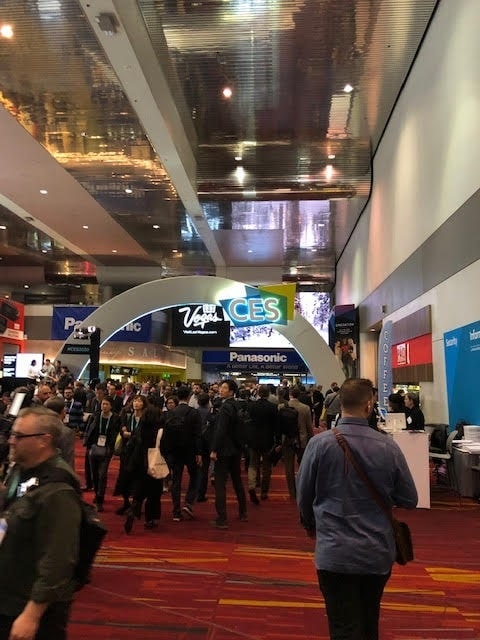Historically, government and the military drove innovation, with the private sector following suit. Big governments and institutions such as a country’s air force have always had a pressing need to innovate. Security needs precede any others when it comes to a nation’s safety. However, because of the decreasing cost of technology, global access to it, and the significant amount of private funding pouring into tech, it is not big governments looking to learn from the private sector. It is the exact opposite.
A good example of consumer technology which could have security related applications (or even step in where government is unable to act) is the tech presented at the annual Consumer Electronics Show (CES). We’ll recap broader trends from this show that could be relevant to security.
Smart cities tech
Smart cities tech can encompass several technologies to help make a city run smoother, such as transportation and IoT. Many panels at CES had a focus on cyber – as in a future interconnected world where terrorist would hack a city to wreak havoc. An example of what a future smart city could look like was announced at this year’s conference. As covered in this ZDNET article “Toyota plans to build a smart city called Woven City that will sit at the base of Mt. Fuji in Japan, be powered by hydrogen fuel cells and test autonomy, robotics and artificial intelligence technology.” The question from our perspective: What steps are being taken to secure this city?
Resilience tech
One of the most important verticals is technology which helps us recover from the increasing amount of natural disasters. Cybersecurity plays a part, as does ensuring supply chains. While many conference panels focused on the future of technology and its impact, some voices felt that CES was not properly addressing pressing global problems. As this Washington Post article covered “with each CES, more reality creeps in. For the second consecutive year, the event had a section focused on climate change-related technology with the optimistic name “Resilience.” Other devices on display hinted at general heightened anxiety and helicopter parenting of the digital age, with tech to help you sleep, meditate and track everything and person in your life to make sure they’re okay.”
AI, 5G and IoT
The combo of the increasing pervasiveness of AI into our daily lives, the explosion of IoT connected devices, and the possibility of 5G have been hyped recently. While there is still a lot of hand waving on how 5G will improve our lives, we were assured that it will completely transform everything. Aside from a lot of the marketing hype analysts are at least providing real economic figures on 5G’s impact “with research suggesting that 5G is expecting to provide $12.3 trillion of global economic output, and support 22 million jobs around the world by 2035, the potential is huge. Not only will the technology support devices, but it can also transform lives.” While those are impressive numbers and the speed and ability of 5G to process all that data sounds game changing, we’ll wait to see how this will impact our lives.
Transportation
Flying cars may become a reality. While this seems like something out of a Hollywood movie, we may see flying cars in the skies one day soon. It depends on how you look at what “flying vehicles” means as many are akin to drones which carry human passengers. Bell’s flying car prototype has been showcased the last few years at CES, but it looks closer to coming into operation. From a security perspective, flying vehicles could serve as first responders on the battlefield and in civilian capabilities. In related news to the prototype vehicles showcased at CES, Boeing Eyes Israeli Company’s Patented Propulsion Tech For ‘Flying Vehicles’ so this may become a reality in the near future.
While we focus on privacy issues with big tech (here at Interfor as those abuses are causes for concern) we are overall optimistic about what technology holds for the coming year. CES Tech Show tends to paint an optimistic picture of how technology will improve our lives without much downside, but the show organizers responsibly created a sizeable amount of content on cybersecurity and resilience tech.
To find out more, please reach out to info@interforinternational.com





